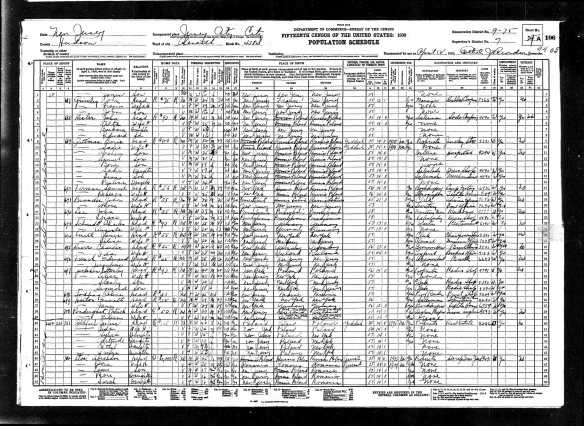In 1910, the family of Jacob and Taube (Tillie) Hecht was living in Brooklyn, as we saw. But by 1913, they had returned to Manhattan. Their oldest daughter Ida married Julius Goldfarb on November 20, 1913. Both she and Julius were living at the same address, 131 Avenue C, in Manhattan, according to their marriage certificate.
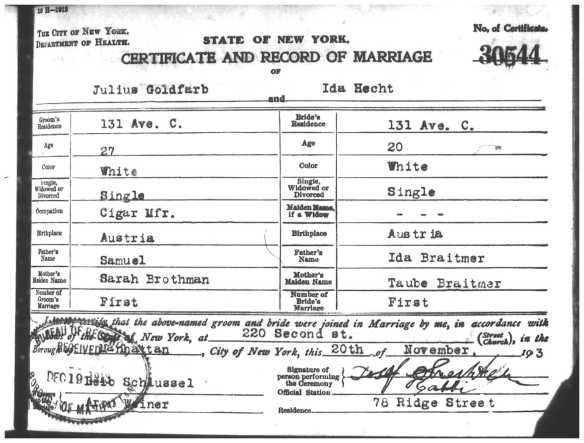
Marriage certificate of Julius Goldfarb and Ida Hecht, New York, New York City Marriage Records, 1829-1940,” database, FamilySearch (https://familysearch.org/ark:/61903/1:1:243Y-5QW : 10 February 2018), Julius Goldfarb and Ida Hecht, 20 Nov 1913; citing Marriage, Manhattan, New York, New York, United States, New York City Municipal Archives, New York; FHL microfilm 1,613,807.
But no, they weren’t living together before they married. Their families lived in the same building. The 1915 New York State census shows that the family of Sam and Sarah (Brod) Goldfarb and the family of Taube (Brotman) and Jacob Hecht were all living at that same address. As I’ve mentioned before, also living at that address were my great-uncle Hyman/Herman Brotman, Taube’s half-brother, and his family.

Goldfarb, Hyman Brotman and family, and Jacob Hecht, 1915 NYS census, New York State Archives; Albany, New York; State Population Census Schedules, 1915; Election District: 18; Assembly District: 06; City: New York; County: New York; Page: 85
Description District: A·D· 06 E·D· 18, Ancestry.com. New York, U.S., State Census, 1915
The 1915 NYS census reported that Jacob was 50, Taube (Tillie) 40, that both were born in Austria, had been in the US for 30 years, and were still not citizens of the United States. Jacob was working as a tailor. They still had seven children living at home with them. Their oldest child Harry was 23 and a salesman at a department store. David (19), Etta (16), Gussie (14), Sadie (12), Rosie (9), and Eva (7) were all in school.
I am very grateful to my cousin Jerry for sharing this photograph of Taube and Jacob and all eight of their children, taken probably around 1915.

Standing rear: Julius Goldfarb, Ida Hecht Goldfarb, Harry Hecht, David Hecht, Etta Hecht. Standing front: Sadie (Shirley) Hecht, Taube “Tillie” Hecht, Eva (Evelyn) Hecht, Jacob Hecht, Ruth Hecht, Gussie (Jean) Hecht. c. 1915 Courtesy of Jerold Oshinsky
Meanwhile, Ida and Julius had moved to Jersey City, and I’ve told their story here, here, and here, so will not repeat it again, except to note that Taube and Jacob became grandparents when Ida gave birth to her first daughter Sylvia on May 7, 1915, in Jersey City. Ida had had her second child, Gertrude, on June 28, 1917, in Jersey City, giving Taube and Jacob their second grandchild.
By that time, the US had entered World War I, and both of Taube and Jacob’s sons registered for the draft on June 5, 1917. They were living at 306 East 11th Street in Manhattan, showing that the Hecht family had moved yet again.
Harry was working as a salesman at B. Altman’s department store. He described himself as tall and slender with brown hair and brown eyes.
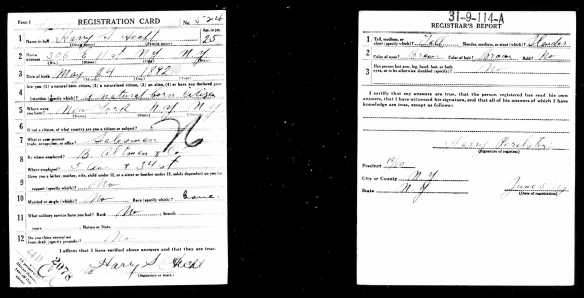
Harry Hecht, World War I draft registration, New York; Registration County: New York
Ancestry.com. U.S., World War I Draft Registration Cards, 1917-1918
David was a student and employed by City College of New York. He also described himself as tall, slight, with brown hair and brown eyes. David claimed an exemption from service for physical reasons not specified. David did end up working as a clerk for the War Department.

David Hecht, World War I draft registration, Registration State: New York; Registration County: New York, Ancestry.com. U.S., World War I Draft Registration Cards, 1917-1918
Harry, however, was drafted into the US Army on September 28, 1917. He was sent to Camp Upton for basic training and assigned to Company K of the 305th Machine Gun Battalion of the 77th Division. He was promoted to a bugler in December, 1917,1 and shipped out to Europe with his company on April 16, 1918.2
His granddaughter Jan shared this photograph of Harry in uniform.
A detailed journal of the wartime activities of the 305th Machine Gun Battalion written by Henry W. Smith can be found here. It provides an almost day by day description of the training and experiences and the course of the battles these soldiers fought in France.
Harry spent a year serving overseas in France in some of the most important and most deadly battles of World War I. He served in the Baccarat Sector, where this video was filmed and shows the arrival of the 77th Division.3
He also served in the Vesle Sector and fought in the third Oise Aisne offensive in the late summer of 1918, one of the most important battles of the war as the Allied forces began to force the Germans to retreat. Here is a film of the Oise Aisne offensive.
Harry was gassed during the Oise Aisne offensive on September 5, 1918, and evacuated to the 305th Field Hospital. But he returned to the battlefield and fought in the Meuse Argonne offensive in the fall of 1918.4
As described on the National Archives website:
The Meuse-Argonne Offensive was a part of the final Allied offensive of World War I. It was one of the attacks that brought an end to the War and was fought from September 26 – November 11, 1918, when the Armistice was signed.
The Meuse-Argonne Offensive was the largest operations of the American Expeditionary Forces (AEF) in World War I, with over a million American soldiers participating. It was also the deadliest campaign in American history, resulting in over 26,000 soldiers being killed in action (KIA) and over 120,000 total casualties.
Fortunately, Harry was not among those killed in this horrific battle. He was promoted to the rank of private first class in November, 1918, and received a regimental citation for his outstanding service. The citation specified that, “For extraordinary heroism in the Bois de la Naza, Argonne Forest, when the battalion was held up by heavy machine gun fire from Oct. 1 to 5, 1918, P.F.C. Hecht continuously delivered messages to 3 Bat. Hdqtrs. and also maintained liaison with Cos. M & L 305 Inf who were on our right at that time, being subjected at all times to machine gun and shell fire.”5
Harry was discharged from the Army on May 9, 1919,6 and returned home, an American hero: a son of Jewish immigrants, a boy whose father worked in a sweatshop sewing coats to provide for his wife and eight children, and my mother’s first cousin. I am proud to call him my cousin as well.
- Harry Sidney Hecht, Ancestry.com. New York, U.S., Abstracts of World War I Military Service, 1917-1919; Harry Hecht, Series II: Questionnaires: Jews; Record Group Description: (B) Casualties (Boxes 6-9); Box #: 6; Folder #: 6; Box Info: (Box 6) H-Hez, Ancestry.com. U.S., World War I Jewish Servicemen Questionnaires, 1918-1921 ↩
-
Harry Sidney Hecht, Departure Date: 16 Apr 1918, Departure Place: New York, New York, Address: 306 E 11th St, Residence Place: New York, New York
Father: Jacob Hecht, Ship: Cedric, Rank: Bugl, Service Number: #1698294
Notes: Company “K” 305th Infantry NA, The National Archives at College Park; College Park, Maryland; Record Group Title: Records of the Office of the Quartermaster General, 1774-1985; Record Group Number: 92; Roll or Box Number: 404, Ancestry.com. U.S., Army Transport Service Arriving and Departing Passenger Lists, 1910-1939 ↩ - See note 1, above. ↩
- See note 1, above. ↩
- See note 1, above. ↩
- See note 1, above. ↩




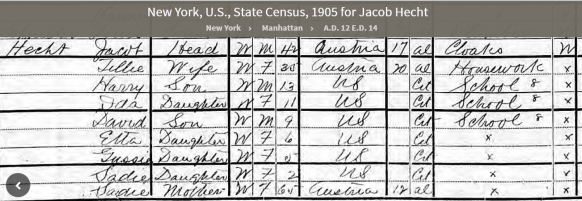


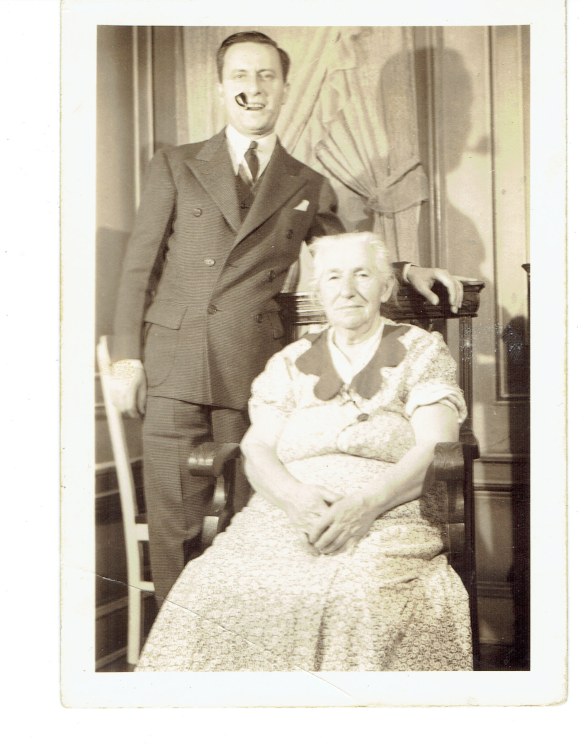
















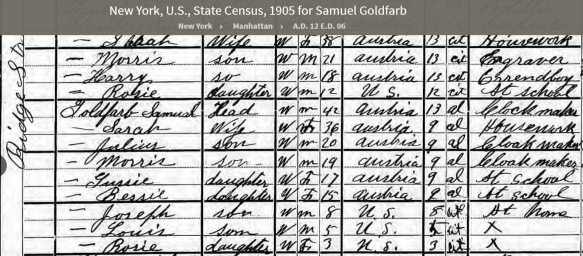






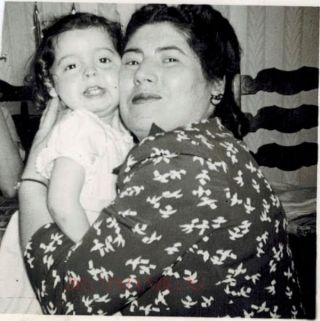














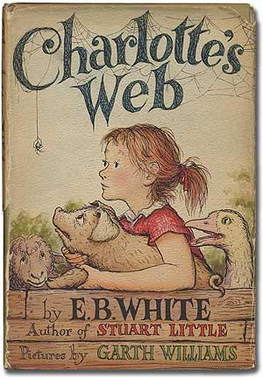


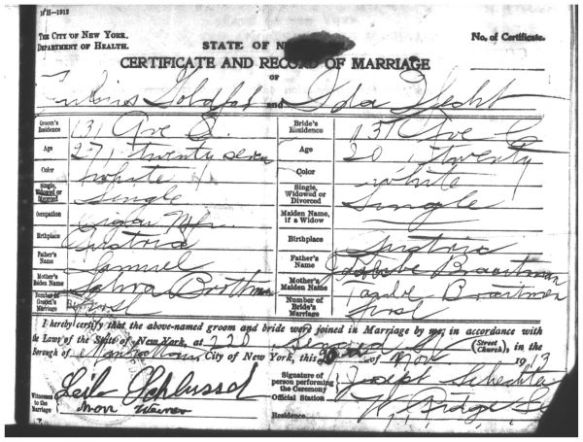



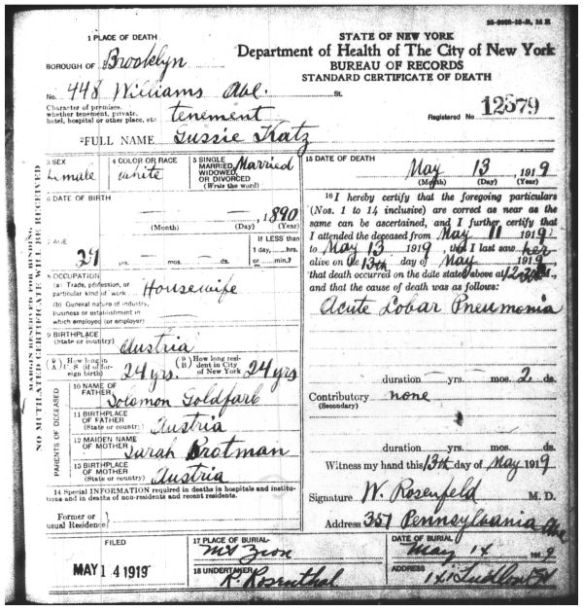



![Jersey City directory 1925 Ancestry.com. U.S. City Directories, 1822-1995 [database on-line]. Provo, UT, USA: Ancestry.com Operations, Inc., 2011. Original data: Original sources vary according to directory](https://brotmanblog.files.wordpress.com/2016/09/goldfarb-brothers-in-1925-jersey-city-directory.jpg?w=584&h=73)
![1925 Jersey City directory Ancestry.com. U.S. City Directories, 1822-1995 [database on-line]. Provo, UT, USA: Ancestry.com Operations, Inc., 2011. Original data: Original sources vary according to directory.](https://brotmanblog.files.wordpress.com/2016/09/m-malzberg-in-1925-jersey-city-directory.jpg?w=584)


